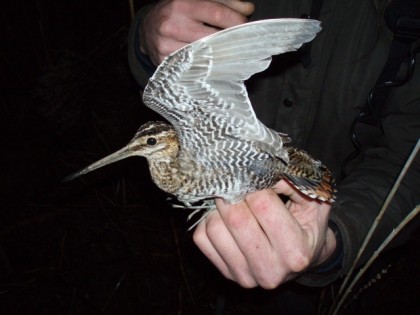
“A snipe hunt, a made up hunt that is also known as a fool’s errand, is a type of practical joke that involves experienced people making fun of credulous newcomers by giving them an impossible or imaginary task. The origin of the term is a practical joke where inexperienced campers are told about a bird or animal called the snipe as well as a usually preposterous method of catching it, such as running around the woods carrying a bag or making strange noises such as banging rocks together.”—Wikipedia
There is a common belief that a “snipe hunt” is some sort of wild goose chase, a hazing ritual for naïve outdoorsfolk. The truth about the mythical snipe hunt is that the tools and techniques the rube is supposed to use are real tools and techniques for catching real snipe. The wikipedia and urban dictionary pages cite moonless nights, spotlights, noisemakers, and gunny sacks. Yes! These are the tools of the trade for a bird-catching tradition that goes back a very long way.
I first learned about snipe hunt techniques from famed Indian bird trapper Ali Hussein. He comes from a long line of bird trappers who once caught birds for profit. As times changed, Ali developed a conservation ethic and began using his deep knowledge and experience to catch birds for science instead. I met Ali at Hawaii Volcanoes National Park while he was on a world tour of biological stations, traveling with a translator and a passel of trapping gear (made mostly from bamboo and other natural materials) to share his skills and knowledge with biologists.
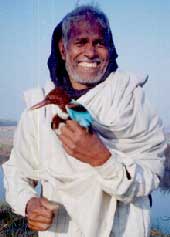
Bird-catching rock star Ali Hussein
One of the simpler techniques Ali demonstrated was the “torch and gong.” The bird trapper takes advantage of a moonless night to find waterbirds (such as snipe) carrying a flaming torch while beating a disorienting gong to obscure the sounds of the approaching trapper. When the bewildered bird is spotted, a net is thrown over it to catch it. A snipe hunt, plain and simple.
The snipe hunting tradition has continued in wildlife research, with updated tools and techniques. For example a 1959 report from the Illinois Natural History survey outlines the snipe-hunting method (they call it “night-lighting”) using a truck driven through a field with a generator-powered bank of spotlights, with a trapper riding on the hood carrying a long-handled net.
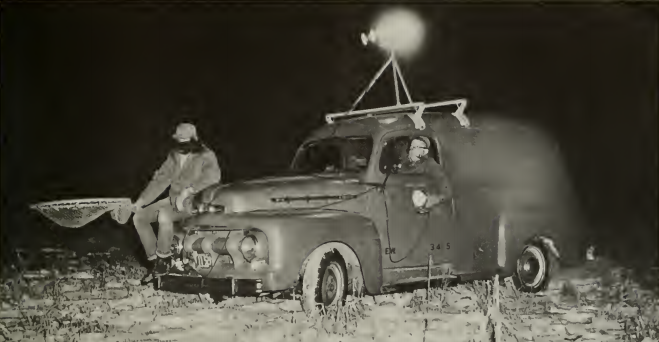
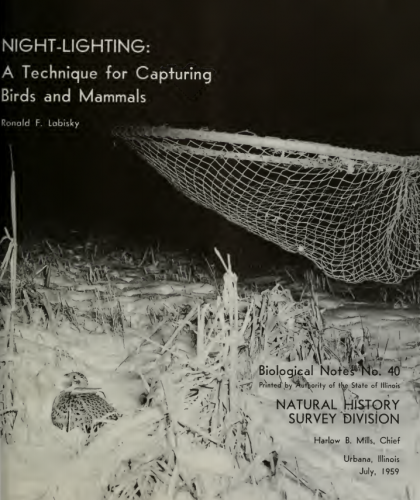
And even now, right here in Cape May, a multi-year study of migrating and wintering woodcock (a very similar bird to snipe) employs the snipe-hunt technique (or if you prefer, the torch and gong, night-lighting, or in Ali’s language, luki-phanna) as their primary capture technique. At some woodcock trapping sites, the snipe are numerous as well. Once in awhile the woodcock trappers scoop up a snipe, just to prove that snipe hunting is by no means a fools errand.
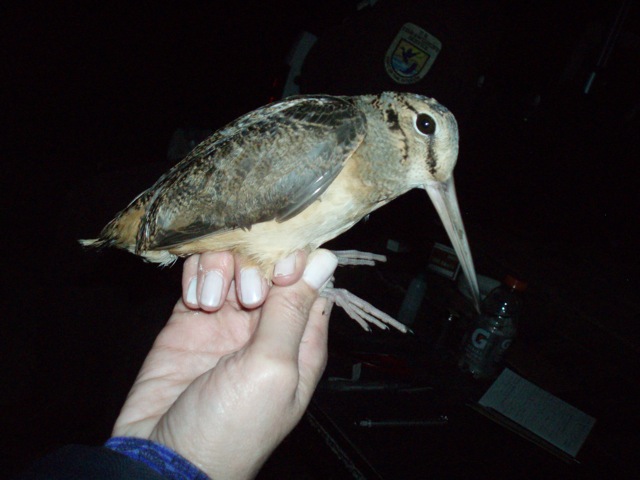
A woodcock, caught with the ol’ torch and gong. Photo by Wayne Russell.
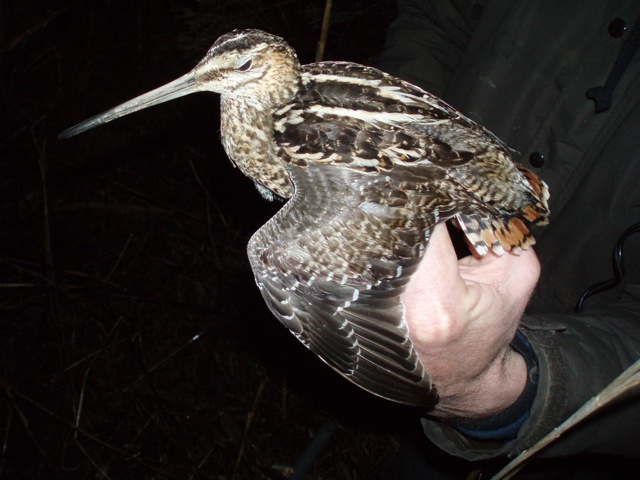
A successful snipe hunt: a Wilson’s snipe. Photo by Wayne Russell.
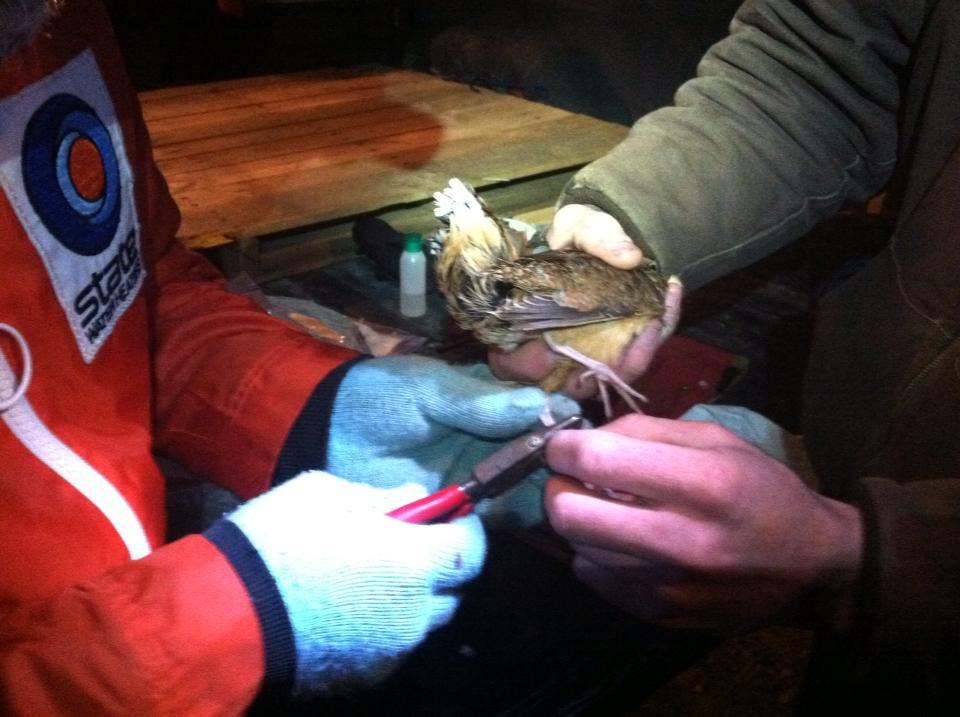
Wayne banding a woodcock.